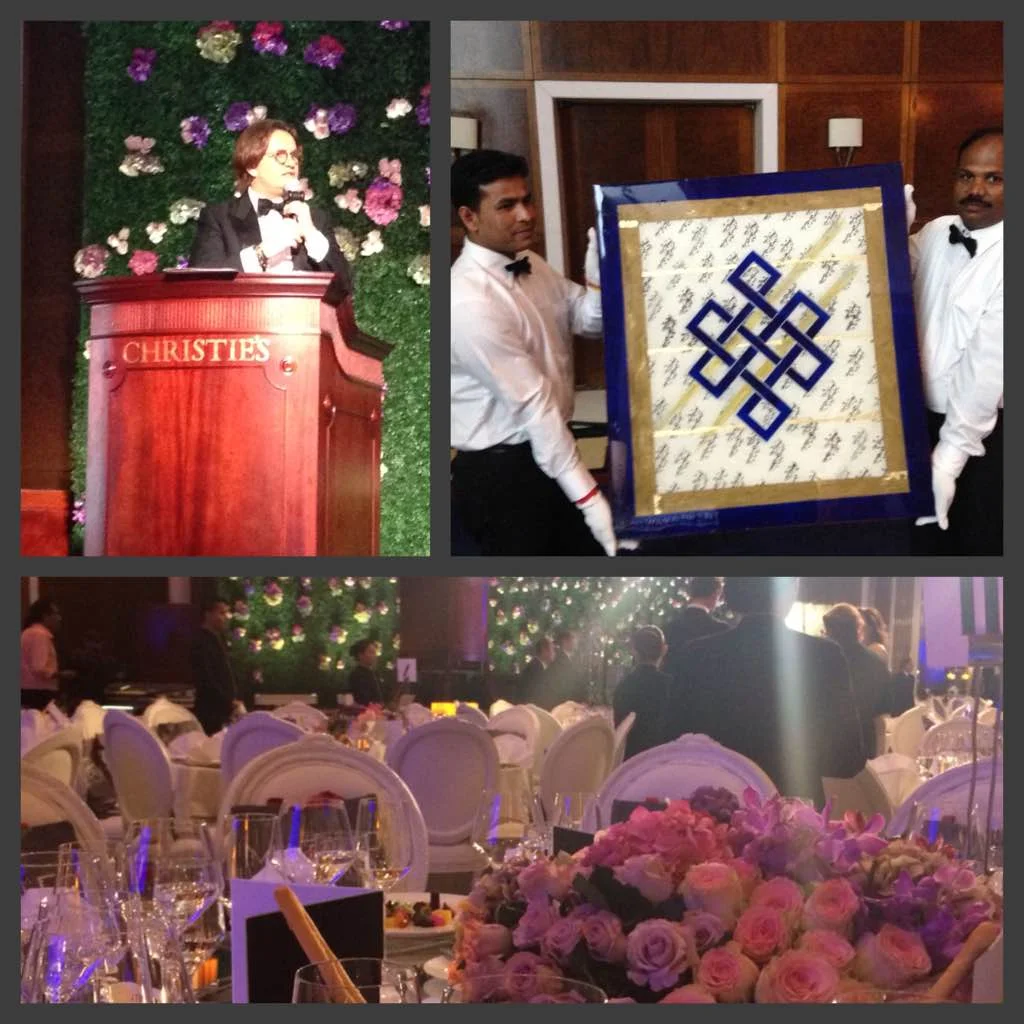The fiery destruction of Persepolis as a result of a drunken rage or a strategic geo-political move by Macedonian conquerors will be debated by his historians for ages. But the ages still whisper as you stand at the gates of this ancient city. Despite it’s torching in 330 BCE Once wandering it’s streets once still senses it’s unique place in Persian history as the the seat of government for the Achaemenian kings and a center for reception and ceremonial festivities. On first visit there I spent hours mesmerized by the carvings and the artistry of my ancestors. Those voices heard as faint echo’s from stone inspired the idea of creating the Perspolis Project. I aim to amplify the whispers of those amazing carvings - the Human-Headed Winged Lion, colossal bull head, Persian soldiers who are shown to be bringing tribute and gifts to the Persian king as a token of their loyalty - all are shown in these series mixed with a modern twist and using different media such as Farsi calligraphy, ink, paper, Acrylic, etc on wood panels. Dimensions vary. I invite you to view some of the art images HERE. The project is an ongoing project so stay tuned for some new images soon.
magic of persia
Going once, going twice...and SOLD! /
And finally the day I was so looking forward to arrived. The Magic of Persia Nowruz Auction Gala benefit in Dubai which was held on Iranian new years - March 21st 2015 - at Emirates Towers. The setting was beautiful and I was accompanied by my number one fan, my husband. We were welcomed by champagne to the salon where all the artworks were on display.
Nowruz Pirooz! /
As we approach Persian New year I thought it would be good to share some details about Nowruz for those who might not be familiar with it.
Nowruz (pronounced no-rooz) is a combination of two Persian words. The first word “now” means new and the second word “ruz” means day; together they mean “New Day.” Nowruz is the name for the celebrations that observe the New Year for many Persian and Central Asian communities. The exact beginning of the New Year occurs when the season changes from winter to spring on the vernal equinox, which usually happens on 20 or 21 March each year. The spelling of Nowruz in English can take many forms, including: Noroz, Norouz, Nowruz and Norooz. For this resource we have used the spelling Nowruz.
It is a secular holiday that is enjoyed by people of several different faiths and as such can take on additional interpretations through the lens of religion. Nowruz is partly rooted in the religious tradition of Zoroastrianism and became a popular celebration among the communities that grew from the Persian influenced cultural areas. While the physical region called Persia no longer exists, the traditions of Nowruz are strong among people in Afghanistan, Iran, Iraq, Tajikistan, Uzbekistan, Azerbaijan, India, Pakistan, Turkey, Canada and the United States.
The most important activity in the celebration of Nowruz is making the haft-seen table. Haft is the Persian word for the number seven and seen is the Persian word for the letter S. Literally, the haft-seen table means a “table of seven things that start with the letter S’. Creating the haft-seen table is a family activity that begins by spreading a special family cloth on the table. Next the table is set with the seven S items. Here are some of the items and what they symbolize:
Sumac (crushed spice of berries): For the sunrise and the spice of life Senjed (sweet dry fruit of the lotus tree): For love and affection Serkeh (vinegar): For patience and age Seeb (apples): For health and beauty
Sir (garlic): For good health Samanu (wheat pudding): For fertility and the sweetness of life Sabzeh (sprouted wheat grass): For rebirth and renewal of nature
In addition to these S items, there are other symbolic items that go on the haft-seen table, depending on the tradition of each family. It is customary to place a mirror on the table to symbolize reflection on the past year, an orange in a bowl of water to symbolize the Earth, a bowl of real goldfish to symbolize new life, colored eggs to represent fertility, coins for prosperity in the New Year, special flowers called hyacinths to symbolize spring and candles to radiate light and happiness. Each family places other items on the table that are special for example, family photos of those who might not be present at the table once the the Qur’an- the holy book of Islam - or the Shahnameh, an epic Persian story of colorful kings and princes written around the year 1000 CE or book of poetry by the famous poet Shams ud-Din Hafez. Hafez who lived in Persian lands during the 14th Century CE.
As we are currently in Dubai due to the MOP Foundation Auction on my piece which will be on March 21st, I will have to share with you the image of our version of haft sin at a later stage.
Last but not least, here is a great song perfumed by Ali Azimi welcoming Nowruz.
Nowruz Pirooz !
[embed]https://www.youtube.com/watch?v=1--jgwyT4Dw[/embed]



